【Java】JDK1.8 HashMap解析
JDK1.8 HashMap解析
WillLiaowh发布于 今天 09:49
数据结构
JDK1.8的HashMap采用数组+单链表+红黑树的数据结构,数组和链表存储的是一个个Node对象,红黑树存储的是TreeNode对象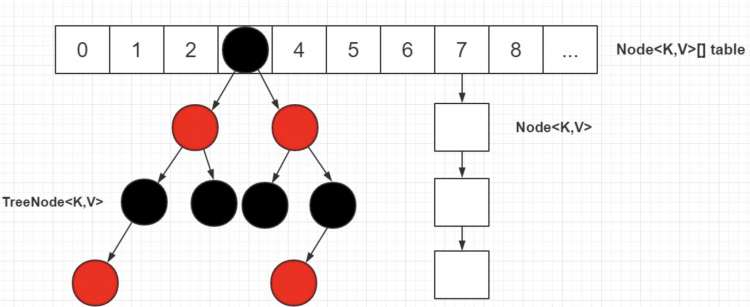
Node
static class Node<K,V> implements Map.Entry<K,V> {final int hash;
final K key;
V value;
Node<K,V> next;
}
TreeNode
static final class TreeNode<K,V> extends LinkedHashMap.Entry<K,V> {TreeNode<K,V> parent; // red-black tree links
TreeNode<K,V> left;
TreeNode<K,V> right;
TreeNode<K,V> prev; // needed to unlink next upon deletion
boolean red;
TreeNode(int hash, K key, V val, Node<K,V> next) {
super(hash, key, val, next);
}
final TreeNode<K,V> root() {
for (TreeNode<K,V> r = this, p;;) {
if ((p = r.parent) == null)
return r;
r = p;
}
}
}
常用方法
常用API
V get(Object key); //获得指定key的值V put(K key, V value); //添加key-value对
void putAll(Map<? extends K, ? extends V> m); //将指定Map中的key-value对复制到此Map中
V remove(Object key); //删除该key-value
boolean containsKey(Object key); //判断是否存在该key的key-value对;是则返回true
boolean containsValue(Object value); //判断是否存在该value的key-value对;是则返回true
Set<K> keySet(); //单独抽取key序列,将所有key生成一个Set
Collection<V> values(); //单独value序列,将所有value生成一个Collection
void clear(); // 清除HashMap中的所有key-value对
int size(); // 返回HashMap中所有key-value对的数量
boolean isEmpty(); // 判断HashMap是否为空,size == 0时表示为空
使用
public class HashMapTest {public static void main(String[] args) {
/**
* 1. 声明1个 HashMap的对象
*/
Map<String, Integer> map = new HashMap<String, Integer>();
/**
* 2. 向HashMap添加数据(放入键-值对)
*/
map.put("Java", 1);
map.put("HashMap", 2);
map.put("List",3);
map.put("set",4);
/**
* 3. 获取 HashMap 的某个数据
*/
System.out.println("" + map.get("HashMap"));
/**
* 4. 遍历HashMap共有3种方法:分别针对Entry或key或value
* 步骤1:获得Entry或key或value的集合
* 步骤2:遍历,使用for循环或迭代器Iterator
*/
// 方法1:获得Entry的Set集合再遍历
// 获得Entry的Set集合
Set<Map.Entry<String, Integer>> entrySet = map.entrySet();
// 通过for循环遍历
for(Map.Entry<String, Integer> entry : entrySet){
System.out.print(entry.getKey());
System.out.println(entry.getValue());
}
// 通过迭代器遍历
// 先获得Entry的Iterator,再循环遍历
Iterator iter1 = entrySet.iterator();
while (iter1.hasNext()) {
// 遍历时,需先获取entry,再分别获取key、value
Map.Entry entry = (Map.Entry) iter1.next();
System.out.print((String) entry.getKey());
System.out.println((Integer) entry.getValue());
}
// 方法2:获得key的Set集合再遍历
Set<String> keySet = map.keySet();
// 通过for循环
for(String key : keySet){
System.out.print(key);
System.out.println(map.get(key));
}
// 通过迭代器遍历
// 先获得key的Iterator,再循环遍历
Iterator iter2 = keySet.iterator();
String key = null;
while (iter2.hasNext()) {
// 遍历时,需先获取key,再获取value
key = (String)iter2.next();
System.out.print(key);
System.out.println(map.get(key));
}
// 方法3:获得value的集合再遍历
Collection valueSet = map.values();
// 获得values的Iterator,再循环遍历
Iterator iter3 = valueSet.iterator();
while (iter3.hasNext()) {
System.out.println(iter3.next());
}
}
}
对于遍历方式,推荐使用针对 key-value对(Entry)的方式:效率高
- 对于遍历keySet,valueSet,实质上遍历了2次:
第1次,for/iterator迭代器遍历;
第2次 从HashMap中取出key的value操作 - 对于遍历entrySet,实质遍历了1次for/iterator迭代器遍历,Entry已经存储了key和 value
源码分析
主要属性
//默认容量static final int DEFAULT_INITIAL_CAPACITY = 1 << 4;
//最大容量
static final int MAXIMUM_CAPACITY = 1 << 30;
//加载因子
static final float DEFAULT_LOAD_FACTOR = 0.75f;
//扩容阈值 = 容量 x 加载因子,当哈希表的大小 ≥ 扩容阈值时,就会扩容哈希表
int threshold
//存储数据的Node类型数组,长度=2的幂
transient Node<K,V>[] table;
//HashMap中存储的键值对的数量
transient int size
// 链表的树化阈值,即链表转成红黑树的阈值,当Node链表长度>该值时,则将链表转换成红黑树
static final int TREEIFY_THRESHOLD = 8;
// 链表的还原阈值,即红黑树转为链表的阈值,当在扩容时,HashMap的数据存储位置会重新计算,在重新计算存储位置后,当红黑树内TreeNode数量 < 6时,则将 红黑树转换成链表
static final int UNTREEIFY_THRESHOLD = 6;
// 最小链表树化容量阈值,即 当Node数组长度 > 该值时,才允许树形化链表,否则则直接扩容,而不是树形化
static final int MIN_TREEIFY_CAPACITY = 64;
构造方法
//加载因子,容量可指定public HashMap(int initialCapacity, float loadFactor) {
if (initialCapacity < 0)
throw new IllegalArgumentException("Illegal initial capacity: " +
initialCapacity);
if (initialCapacity > MAXIMUM_CAPACITY)
initialCapacity = MAXIMUM_CAPACITY;
if (loadFactor <= 0 || Float.isNaN(loadFactor))
throw new IllegalArgumentException("Illegal load factor: " +
loadFactor);
this.loadFactor = loadFactor;
this.threshold = tableSizeFor(initialCapacity);
}
//加载因子等于默认值,容量可指定
public HashMap(int initialCapacity) {
this(initialCapacity, DEFAULT_LOAD_FACTOR);
}
//默认构造函数,加载因子,容量等于默认值
public HashMap() {
this.loadFactor = DEFAULT_LOAD_FACTOR; // all other fields defaulted
}
//可传入一个map的构造函数
public HashMap(Map<? extends K, ? extends V> m) {
this.loadFactor = DEFAULT_LOAD_FACTOR;
putMapEntries(m, false);
}
put()方法
public V put(K key, V value) {return putVal(hash(key), key, value, false, true);
}
final V putVal(int hash, K key, V value, boolean onlyIfAbsent,
boolean evict) {
Node<K,V>[] tab; Node<K,V> p; int n, i;
//1. 若Node数组为空,则通过resize()初始化数组
if ((tab = table) == null || (n = tab.length) == 0)
n = (tab = resize()).length;
//2.计算key存放Node数组中的数组下标,判断这个数组下标Node数组上是否有Node存在
//2.1若不存在,则在该位置新建一个Node节点
if ((p = tab[i = (n - 1) & hash]) == null)
tab[i] = newNode(hash, key, value, null)
//2.2若存在
else {
Node<K,V> e; K k;
//2.1.1判断key是否与数组上的Node里面的key是否相同,是则用新的value值替换旧的value值
if (p.hash == hash &&
((k = p.key) == key || (key != null && key.equals(k))))
e = p;
//2.1.2若不相同,判断当前Node是红黑树,则在树中插入或更新键值对
else if (p instanceof TreeNode)
e = ((TreeNode<K,V>)p).putTreeVal(this, tab, hash, key, value);
//2.1.3若不相同,判断当前Node是链表,则在链表中插入或更新键值对
else {
//遍历以该Node为头结点的链表,判断该key是否已存在
for (int binCount = 0; ; ++binCount) {
//若该key不存在,则将key-value添加到Node数组中,这里采用尾插法
if ((e = p.next) == null) {
p.next = newNode(hash, key, value, null);
//链表长度 >= 桶的树化阈值=8,则将链表转换成红黑树
if (binCount >= TREEIFY_THRESHOLD - 1) // -1 for 1st
treeifyBin(tab, hash);
break;
}
if (e.hash == hash &&
((k = e.key) == key || (key != null && key.equals(k))))
break;
p = e;
}
}
//若该key已存在,则用新value替换旧value
if (e != null) { // existing mapping for key
V oldValue = e.value;
if (!onlyIfAbsent || oldValue == null)
e.value = value;
afterNodeAccess(e);
return oldValue;
}
}
++modCount;
// 插入成功后,判断实际存在的键值对数量size > 最大容量threshold
if (++size > threshold)
resize();
afterNodeInsertion(evict);
return null;
}
putTreeVal()
//向红黑树插入或更新数据(键值对),遍历红黑树判断该节点的key是否与传入key相同,相同则新value覆盖旧value,不相同则插入final TreeNode<K,V> putTreeVal(HashMap<K,V> map, Node<K,V>[] tab,
int h, K k, V v) {
Class<?> kc = null;
boolean searched = false;
TreeNode<K,V> root = (parent != null) ? root() : this;
for (TreeNode<K,V> p = root;;) {
int dir, ph; K pk;
if ((ph = p.hash) > h)
dir = -1;
else if (ph < h)
dir = 1;
else if ((pk = p.key) == k || (k != null && k.equals(pk)))
return p;
else if ((kc == null &&
(kc = comparableClassFor(k)) == null) ||
(dir = compareComparables(kc, k, pk)) == 0) {
if (!searched) {
TreeNode<K,V> q, ch;
searched = true;
if (((ch = p.left) != null &&
(q = ch.find(h, k, kc)) != null) ||
((ch = p.right) != null &&
(q = ch.find(h, k, kc)) != null))
return q;
}
dir = tieBreakOrder(k, pk);
}
TreeNode<K,V> xp = p;
if ((p = (dir <= 0) ? p.left : p.right) == null) {
Node<K,V> xpn = xp.next;
TreeNode<K,V> x = map.newTreeNode(h, k, v, xpn);
if (dir <= 0)
xp.left = x;
else
xp.right = x;
xp.next = x;
x.parent = x.prev = xp;
if (xpn != null)
((TreeNode<K,V>)xpn).prev = x;
moveRootToFront(tab, balanceInsertion(root, x));
return null;
}
}
}
resize()方法
final Node<K,V>[] resize() {Node<K,V>[] oldTab = table; //扩容前Node数组
int oldCap = (oldTab == null) ? 0 : oldTab.length; //扩容前Node数组长度
int oldThr = threshold; //扩容前Node数组阈值
int newCap, newThr = 0;
//Node数组长度大于0,非初始化数组
if (oldCap > 0) {
//扩容前Node数组容量超过最大值,不扩容
if (oldCap >= MAXIMUM_CAPACITY) {
threshold = Integer.MAX_VALUE;
return oldTab;
}
//没有超过最大值,数组长度扩容为原来的2倍
else if ((newCap = oldCap << 1) < MAXIMUM_CAPACITY &&
oldCap >= DEFAULT_INITIAL_CAPACITY)
newThr = oldThr << 1; // double threshold
}
//Node数组长度=0,初始化数组
else if (oldThr > 0) // initial capacity was placed in threshold
newCap = oldThr;
else { // zero initial threshold signifies using defaults
newCap = DEFAULT_INITIAL_CAPACITY;
newThr = (int)(DEFAULT_LOAD_FACTOR * DEFAULT_INITIAL_CAPACITY);
}
if (newThr == 0) {
float ft = (float)newCap * loadFactor;
newThr = (newCap < MAXIMUM_CAPACITY && ft < (float)MAXIMUM_CAPACITY ?
(int)ft : Integer.MAX_VALUE);
}
threshold = newThr;
@SuppressWarnings({"rawtypes","unchecked"})
Node<K,V>[] newTab = (Node<K,V>[])new Node[newCap];
table = newTab;
if (oldTab != null) {
// 遍历旧数组,重新计算每个Node在新数组的数组下标,使用尾插法将旧数组中的Node转移到新数组
for (int j = 0; j < oldCap; ++j) {
Node<K,V> e;
if ((e = oldTab[j]) != null) {
oldTab[j] = null;
if (e.next == null)
newTab[e.hash & (newCap - 1)] = e;
else if (e instanceof TreeNode)
((TreeNode<K,V>)e).split(this, newTab, j, oldCap);
else { // preserve order
Node<K,V> loHead = null, loTail = null;
Node<K,V> hiHead = null, hiTail = null;
Node<K,V> next;
do {
next = e.next;
if ((e.hash & oldCap) == 0) {
if (loTail == null)
loHead = e;
else
loTail.next = e;
loTail = e;
}
else {
if (hiTail == null)
hiHead = e;
else
hiTail.next = e;
hiTail = e;
}
} while ((e = next) != null);
if (loTail != null) {
loTail.next = null;
newTab[j] = loHead;
}
if (hiTail != null) {
hiTail.next = null;
newTab[j + oldCap] = hiHead;
}
}
}
}
}
return newTab;
}
get()方法
public V get(Object key) {Node<K,V> e;
return (e = getNode(hash(key), key)) == null ? null : e.value;
}
final Node<K,V> getNode(int hash, Object key) {
Node<K,V>[] tab; Node<K,V> first, e; int n; K k;
//计算key存放Node数组中的数组下标,判断这个数组下标Node数组上是否有Node存在
if ((tab = table) != null && (n = tab.length) > 0 &&
(first = tab[(n - 1) & hash]) != null) {
//1.在Node数组中找key相等的Node
if (first.hash == hash && // always check first node
((k = first.key) == key || (key != null && key.equals(k))))
return first;
//2.在红黑树中找key相等的Node
if ((e = first.next) != null) {
if (first instanceof TreeNode)
return ((TreeNode<K,V>)first).getTreeNode(hash, key);
//3.在链表中找key相等的Node
do {
if (e.hash == hash &&
((k = e.key) == key || (key != null && key.equals(k))))
return e;
} while ((e = e.next) != null);
}
}
return null;
}
源码总结
1.JDK1.8的HashMap采用数组+单链表+红黑树的数据结构,数组和链表存储的是一个个Node对象,红黑树存储的是TreeNode对象
2.添加key-value时会根据key值计算出对应的hash值,再根据hash值计算出对应的数组下标,判断这个数组在这个下标中是否有Node存在:
若没有,则在该位置新建一个Node节点
若有则判断这个Node是属于链表还是属于红黑树,然后分别遍历链表或红黑树,判断是否有相同的key,如果有则用新value替换旧value,如果没有就将Node添加到链表或红黑树,注意这里的链表插入采用尾插法
3.在将Node插入到链表时:
会进行是否红黑树树化的判断,链表长度 >= 桶的树化阈值=8,则将链表转换成红黑树
会进行是否需要扩容的判断,当Node的数量,或者说key-value的数量大于扩容阈值 = 当前容量 x 加载因子,新建一个数组,容量时是数组的2倍,将旧entry数组上的entry数据转移到newtable中,让当前的数组指向新数组从而完成扩容。
4.hashmap1.8与hashmap1.7的区别:
1.数据结构不同
2.与1.7中hashmap的扩容机制不同:
a.hashmap1.8中的扩容后Node的位置是数组的原位置/原位置+旧容b.量,hashmap1.7则是原来位置
b.扩容时,hashmap1.8采用尾插法将数据转移到新数组中,hashmap1.7采用头插法
javahashmap集合
阅读 41更新于 今天 09:52
本作品系原创,采用《署名-非商业性使用-禁止演绎 4.0 国际》许可协议
WillLiaowh
世界上最伟大的力量是坚持。
19 声望
5 粉丝
WillLiaowh
世界上最伟大的力量是坚持。
19 声望
5 粉丝
宣传栏
目录
数据结构
JDK1.8的HashMap采用数组+单链表+红黑树的数据结构,数组和链表存储的是一个个Node对象,红黑树存储的是TreeNode对象
Node
static class Node<K,V> implements Map.Entry<K,V> {final int hash;
final K key;
V value;
Node<K,V> next;
}
TreeNode
static final class TreeNode<K,V> extends LinkedHashMap.Entry<K,V> {TreeNode<K,V> parent; // red-black tree links
TreeNode<K,V> left;
TreeNode<K,V> right;
TreeNode<K,V> prev; // needed to unlink next upon deletion
boolean red;
TreeNode(int hash, K key, V val, Node<K,V> next) {
super(hash, key, val, next);
}
final TreeNode<K,V> root() {
for (TreeNode<K,V> r = this, p;;) {
if ((p = r.parent) == null)
return r;
r = p;
}
}
}
常用方法
常用API
V get(Object key); //获得指定key的值V put(K key, V value); //添加key-value对
void putAll(Map<? extends K, ? extends V> m); //将指定Map中的key-value对复制到此Map中
V remove(Object key); //删除该key-value
boolean containsKey(Object key); //判断是否存在该key的key-value对;是则返回true
boolean containsValue(Object value); //判断是否存在该value的key-value对;是则返回true
Set<K> keySet(); //单独抽取key序列,将所有key生成一个Set
Collection<V> values(); //单独value序列,将所有value生成一个Collection
void clear(); // 清除HashMap中的所有key-value对
int size(); // 返回HashMap中所有key-value对的数量
boolean isEmpty(); // 判断HashMap是否为空,size == 0时表示为空
使用
public class HashMapTest {public static void main(String[] args) {
/**
* 1. 声明1个 HashMap的对象
*/
Map<String, Integer> map = new HashMap<String, Integer>();
/**
* 2. 向HashMap添加数据(放入键-值对)
*/
map.put("Java", 1);
map.put("HashMap", 2);
map.put("List",3);
map.put("set",4);
/**
* 3. 获取 HashMap 的某个数据
*/
System.out.println("" + map.get("HashMap"));
/**
* 4. 遍历HashMap共有3种方法:分别针对Entry或key或value
* 步骤1:获得Entry或key或value的集合
* 步骤2:遍历,使用for循环或迭代器Iterator
*/
// 方法1:获得Entry的Set集合再遍历
// 获得Entry的Set集合
Set<Map.Entry<String, Integer>> entrySet = map.entrySet();
// 通过for循环遍历
for(Map.Entry<String, Integer> entry : entrySet){
System.out.print(entry.getKey());
System.out.println(entry.getValue());
}
// 通过迭代器遍历
// 先获得Entry的Iterator,再循环遍历
Iterator iter1 = entrySet.iterator();
while (iter1.hasNext()) {
// 遍历时,需先获取entry,再分别获取key、value
Map.Entry entry = (Map.Entry) iter1.next();
System.out.print((String) entry.getKey());
System.out.println((Integer) entry.getValue());
}
// 方法2:获得key的Set集合再遍历
Set<String> keySet = map.keySet();
// 通过for循环
for(String key : keySet){
System.out.print(key);
System.out.println(map.get(key));
}
// 通过迭代器遍历
// 先获得key的Iterator,再循环遍历
Iterator iter2 = keySet.iterator();
String key = null;
while (iter2.hasNext()) {
// 遍历时,需先获取key,再获取value
key = (String)iter2.next();
System.out.print(key);
System.out.println(map.get(key));
}
// 方法3:获得value的集合再遍历
Collection valueSet = map.values();
// 获得values的Iterator,再循环遍历
Iterator iter3 = valueSet.iterator();
while (iter3.hasNext()) {
System.out.println(iter3.next());
}
}
}
对于遍历方式,推荐使用针对 key-value对(Entry)的方式:效率高
- 对于遍历keySet,valueSet,实质上遍历了2次:
第1次,for/iterator迭代器遍历;
第2次 从HashMap中取出key的value操作 - 对于遍历entrySet,实质遍历了1次for/iterator迭代器遍历,Entry已经存储了key和 value
源码分析
主要属性
//默认容量static final int DEFAULT_INITIAL_CAPACITY = 1 << 4;
//最大容量
static final int MAXIMUM_CAPACITY = 1 << 30;
//加载因子
static final float DEFAULT_LOAD_FACTOR = 0.75f;
//扩容阈值 = 容量 x 加载因子,当哈希表的大小 ≥ 扩容阈值时,就会扩容哈希表
int threshold
//存储数据的Node类型数组,长度=2的幂
transient Node<K,V>[] table;
//HashMap中存储的键值对的数量
transient int size
// 链表的树化阈值,即链表转成红黑树的阈值,当Node链表长度>该值时,则将链表转换成红黑树
static final int TREEIFY_THRESHOLD = 8;
// 链表的还原阈值,即红黑树转为链表的阈值,当在扩容时,HashMap的数据存储位置会重新计算,在重新计算存储位置后,当红黑树内TreeNode数量 < 6时,则将 红黑树转换成链表
static final int UNTREEIFY_THRESHOLD = 6;
// 最小链表树化容量阈值,即 当Node数组长度 > 该值时,才允许树形化链表,否则则直接扩容,而不是树形化
static final int MIN_TREEIFY_CAPACITY = 64;
构造方法
//加载因子,容量可指定public HashMap(int initialCapacity, float loadFactor) {
if (initialCapacity < 0)
throw new IllegalArgumentException("Illegal initial capacity: " +
initialCapacity);
if (initialCapacity > MAXIMUM_CAPACITY)
initialCapacity = MAXIMUM_CAPACITY;
if (loadFactor <= 0 || Float.isNaN(loadFactor))
throw new IllegalArgumentException("Illegal load factor: " +
loadFactor);
this.loadFactor = loadFactor;
this.threshold = tableSizeFor(initialCapacity);
}
//加载因子等于默认值,容量可指定
public HashMap(int initialCapacity) {
this(initialCapacity, DEFAULT_LOAD_FACTOR);
}
//默认构造函数,加载因子,容量等于默认值
public HashMap() {
this.loadFactor = DEFAULT_LOAD_FACTOR; // all other fields defaulted
}
//可传入一个map的构造函数
public HashMap(Map<? extends K, ? extends V> m) {
this.loadFactor = DEFAULT_LOAD_FACTOR;
putMapEntries(m, false);
}
put()方法
public V put(K key, V value) {return putVal(hash(key), key, value, false, true);
}
final V putVal(int hash, K key, V value, boolean onlyIfAbsent,
boolean evict) {
Node<K,V>[] tab; Node<K,V> p; int n, i;
//1. 若Node数组为空,则通过resize()初始化数组
if ((tab = table) == null || (n = tab.length) == 0)
n = (tab = resize()).length;
//2.计算key存放Node数组中的数组下标,判断这个数组下标Node数组上是否有Node存在
//2.1若不存在,则在该位置新建一个Node节点
if ((p = tab[i = (n - 1) & hash]) == null)
tab[i] = newNode(hash, key, value, null)
//2.2若存在
else {
Node<K,V> e; K k;
//2.1.1判断key是否与数组上的Node里面的key是否相同,是则用新的value值替换旧的value值
if (p.hash == hash &&
((k = p.key) == key || (key != null && key.equals(k))))
e = p;
//2.1.2若不相同,判断当前Node是红黑树,则在树中插入或更新键值对
else if (p instanceof TreeNode)
e = ((TreeNode<K,V>)p).putTreeVal(this, tab, hash, key, value);
//2.1.3若不相同,判断当前Node是链表,则在链表中插入或更新键值对
else {
//遍历以该Node为头结点的链表,判断该key是否已存在
for (int binCount = 0; ; ++binCount) {
//若该key不存在,则将key-value添加到Node数组中,这里采用尾插法
if ((e = p.next) == null) {
p.next = newNode(hash, key, value, null);
//链表长度 >= 桶的树化阈值=8,则将链表转换成红黑树
if (binCount >= TREEIFY_THRESHOLD - 1) // -1 for 1st
treeifyBin(tab, hash);
break;
}
if (e.hash == hash &&
((k = e.key) == key || (key != null && key.equals(k))))
break;
p = e;
}
}
//若该key已存在,则用新value替换旧value
if (e != null) { // existing mapping for key
V oldValue = e.value;
if (!onlyIfAbsent || oldValue == null)
e.value = value;
afterNodeAccess(e);
return oldValue;
}
}
++modCount;
// 插入成功后,判断实际存在的键值对数量size > 最大容量threshold
if (++size > threshold)
resize();
afterNodeInsertion(evict);
return null;
}
putTreeVal()
//向红黑树插入或更新数据(键值对),遍历红黑树判断该节点的key是否与传入key相同,相同则新value覆盖旧value,不相同则插入final TreeNode<K,V> putTreeVal(HashMap<K,V> map, Node<K,V>[] tab,
int h, K k, V v) {
Class<?> kc = null;
boolean searched = false;
TreeNode<K,V> root = (parent != null) ? root() : this;
for (TreeNode<K,V> p = root;;) {
int dir, ph; K pk;
if ((ph = p.hash) > h)
dir = -1;
else if (ph < h)
dir = 1;
else if ((pk = p.key) == k || (k != null && k.equals(pk)))
return p;
else if ((kc == null &&
(kc = comparableClassFor(k)) == null) ||
(dir = compareComparables(kc, k, pk)) == 0) {
if (!searched) {
TreeNode<K,V> q, ch;
searched = true;
if (((ch = p.left) != null &&
(q = ch.find(h, k, kc)) != null) ||
((ch = p.right) != null &&
(q = ch.find(h, k, kc)) != null))
return q;
}
dir = tieBreakOrder(k, pk);
}
TreeNode<K,V> xp = p;
if ((p = (dir <= 0) ? p.left : p.right) == null) {
Node<K,V> xpn = xp.next;
TreeNode<K,V> x = map.newTreeNode(h, k, v, xpn);
if (dir <= 0)
xp.left = x;
else
xp.right = x;
xp.next = x;
x.parent = x.prev = xp;
if (xpn != null)
((TreeNode<K,V>)xpn).prev = x;
moveRootToFront(tab, balanceInsertion(root, x));
return null;
}
}
}
resize()方法
final Node<K,V>[] resize() {Node<K,V>[] oldTab = table; //扩容前Node数组
int oldCap = (oldTab == null) ? 0 : oldTab.length; //扩容前Node数组长度
int oldThr = threshold; //扩容前Node数组阈值
int newCap, newThr = 0;
//Node数组长度大于0,非初始化数组
if (oldCap > 0) {
//扩容前Node数组容量超过最大值,不扩容
if (oldCap >= MAXIMUM_CAPACITY) {
threshold = Integer.MAX_VALUE;
return oldTab;
}
//没有超过最大值,数组长度扩容为原来的2倍
else if ((newCap = oldCap << 1) < MAXIMUM_CAPACITY &&
oldCap >= DEFAULT_INITIAL_CAPACITY)
newThr = oldThr << 1; // double threshold
}
//Node数组长度=0,初始化数组
else if (oldThr > 0) // initial capacity was placed in threshold
newCap = oldThr;
else { // zero initial threshold signifies using defaults
newCap = DEFAULT_INITIAL_CAPACITY;
newThr = (int)(DEFAULT_LOAD_FACTOR * DEFAULT_INITIAL_CAPACITY);
}
if (newThr == 0) {
float ft = (float)newCap * loadFactor;
newThr = (newCap < MAXIMUM_CAPACITY && ft < (float)MAXIMUM_CAPACITY ?
(int)ft : Integer.MAX_VALUE);
}
threshold = newThr;
@SuppressWarnings({"rawtypes","unchecked"})
Node<K,V>[] newTab = (Node<K,V>[])new Node[newCap];
table = newTab;
if (oldTab != null) {
// 遍历旧数组,重新计算每个Node在新数组的数组下标,使用尾插法将旧数组中的Node转移到新数组
for (int j = 0; j < oldCap; ++j) {
Node<K,V> e;
if ((e = oldTab[j]) != null) {
oldTab[j] = null;
if (e.next == null)
newTab[e.hash & (newCap - 1)] = e;
else if (e instanceof TreeNode)
((TreeNode<K,V>)e).split(this, newTab, j, oldCap);
else { // preserve order
Node<K,V> loHead = null, loTail = null;
Node<K,V> hiHead = null, hiTail = null;
Node<K,V> next;
do {
next = e.next;
if ((e.hash & oldCap) == 0) {
if (loTail == null)
loHead = e;
else
loTail.next = e;
loTail = e;
}
else {
if (hiTail == null)
hiHead = e;
else
hiTail.next = e;
hiTail = e;
}
} while ((e = next) != null);
if (loTail != null) {
loTail.next = null;
newTab[j] = loHead;
}
if (hiTail != null) {
hiTail.next = null;
newTab[j + oldCap] = hiHead;
}
}
}
}
}
return newTab;
}
get()方法
public V get(Object key) {Node<K,V> e;
return (e = getNode(hash(key), key)) == null ? null : e.value;
}
final Node<K,V> getNode(int hash, Object key) {
Node<K,V>[] tab; Node<K,V> first, e; int n; K k;
//计算key存放Node数组中的数组下标,判断这个数组下标Node数组上是否有Node存在
if ((tab = table) != null && (n = tab.length) > 0 &&
(first = tab[(n - 1) & hash]) != null) {
//1.在Node数组中找key相等的Node
if (first.hash == hash && // always check first node
((k = first.key) == key || (key != null && key.equals(k))))
return first;
//2.在红黑树中找key相等的Node
if ((e = first.next) != null) {
if (first instanceof TreeNode)
return ((TreeNode<K,V>)first).getTreeNode(hash, key);
//3.在链表中找key相等的Node
do {
if (e.hash == hash &&
((k = e.key) == key || (key != null && key.equals(k))))
return e;
} while ((e = e.next) != null);
}
}
return null;
}
源码总结
1.JDK1.8的HashMap采用数组+单链表+红黑树的数据结构,数组和链表存储的是一个个Node对象,红黑树存储的是TreeNode对象
2.添加key-value时会根据key值计算出对应的hash值,再根据hash值计算出对应的数组下标,判断这个数组在这个下标中是否有Node存在:
若没有,则在该位置新建一个Node节点
若有则判断这个Node是属于链表还是属于红黑树,然后分别遍历链表或红黑树,判断是否有相同的key,如果有则用新value替换旧value,如果没有就将Node添加到链表或红黑树,注意这里的链表插入采用尾插法
3.在将Node插入到链表时:
会进行是否红黑树树化的判断,链表长度 >= 桶的树化阈值=8,则将链表转换成红黑树
会进行是否需要扩容的判断,当Node的数量,或者说key-value的数量大于扩容阈值 = 当前容量 x 加载因子,新建一个数组,容量时是数组的2倍,将旧entry数组上的entry数据转移到newtable中,让当前的数组指向新数组从而完成扩容。
4.hashmap1.8与hashmap1.7的区别:
1.数据结构不同
2.与1.7中hashmap的扩容机制不同:
a.hashmap1.8中的扩容后Node的位置是数组的原位置/原位置+旧容b.量,hashmap1.7则是原来位置
b.扩容时,hashmap1.8采用尾插法将数据转移到新数组中,hashmap1.7采用头插法
以上是 【Java】JDK1.8 HashMap解析 的全部内容, 来源链接: utcz.com/a/110876.html

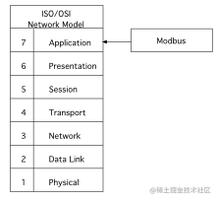
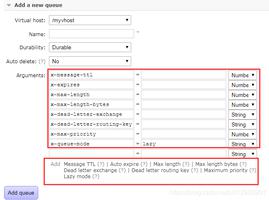
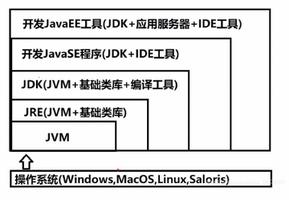
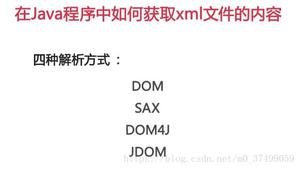
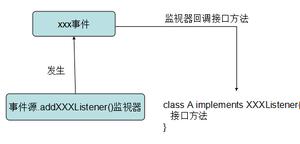




得票时间